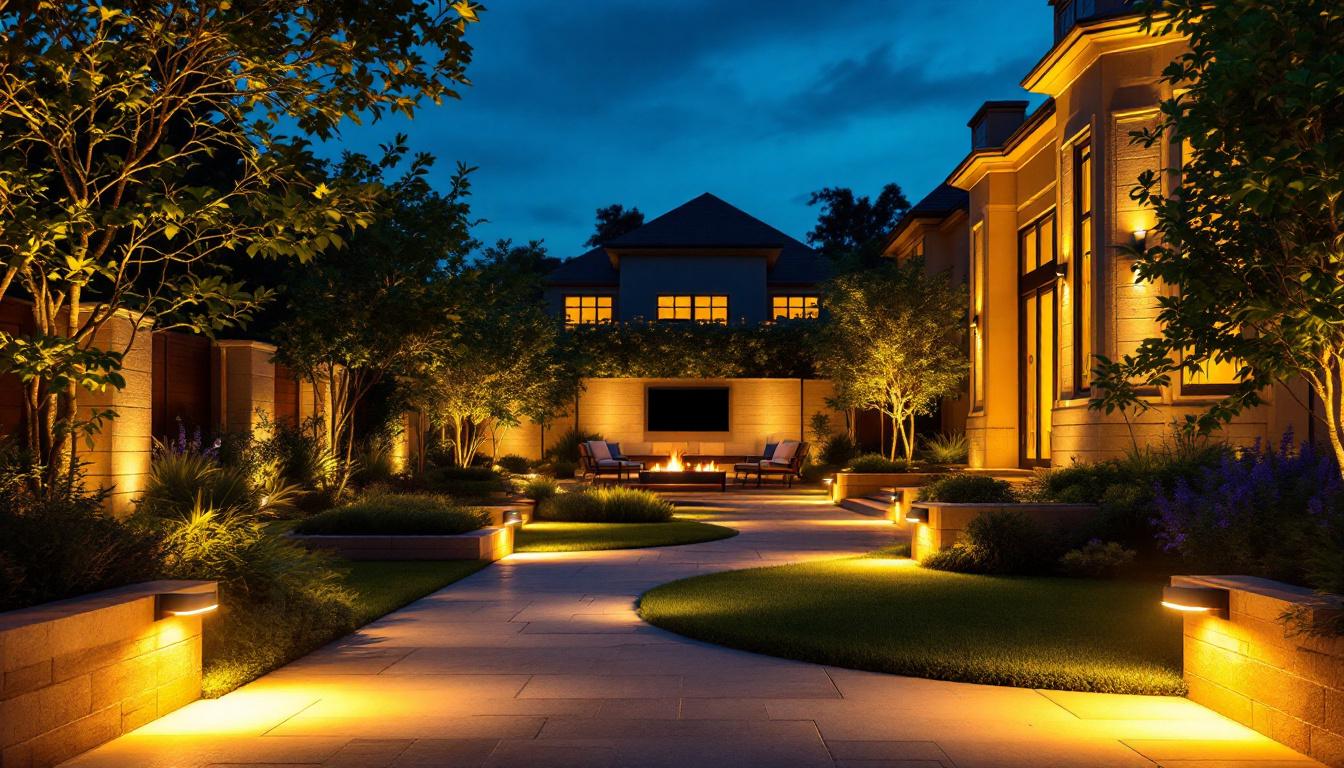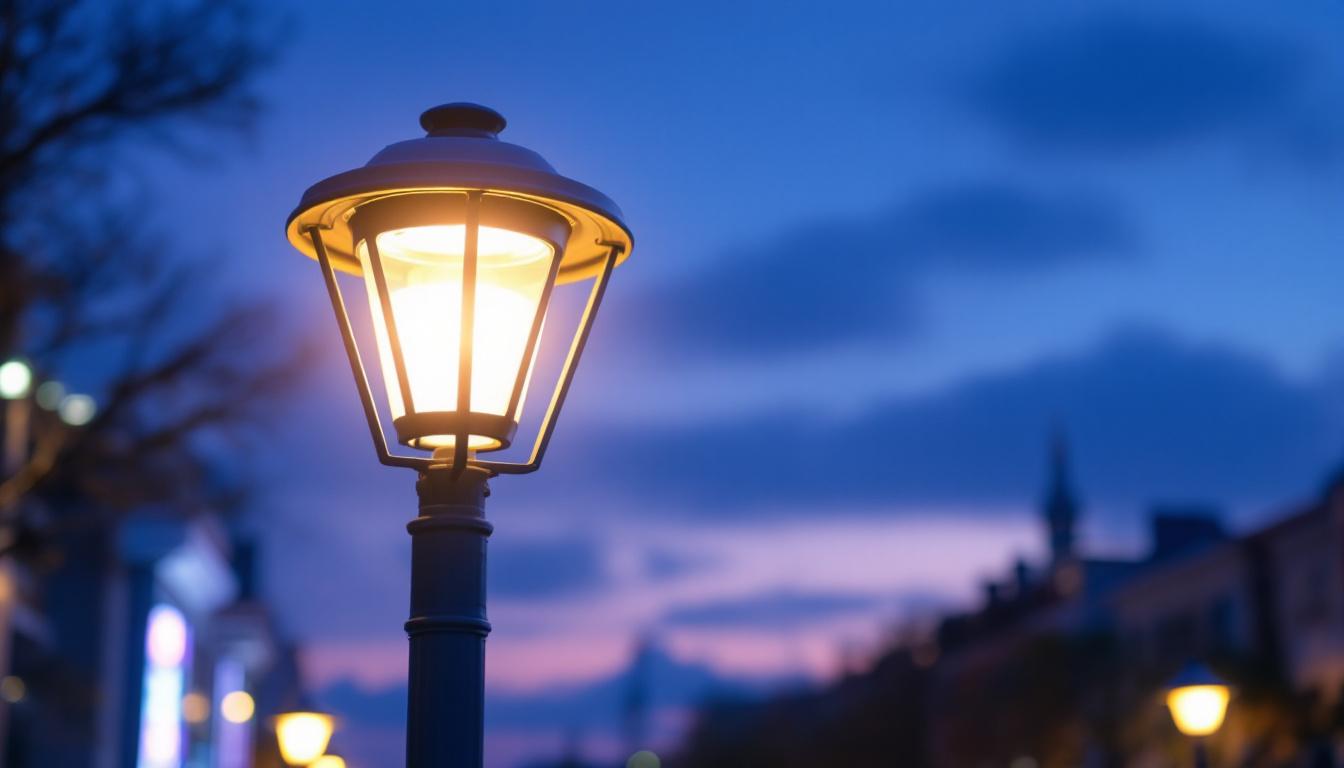
In the realm of lighting installations, the choice between LED and fluorescent lighting is pivotal not only for energy efficiency but also for enhancing safety. As lighting contractors, understanding the nuances of these technologies can significantly impact the quality and safety of installations. This article delves into the differences between LED and fluorescent lighting, focusing on how each contributes to safety in various environments.
LED lighting, known for its longevity and low heat emission, offers a significant advantage in reducing fire hazards. Unlike fluorescent lights, which can become hot and pose a risk in enclosed spaces, LEDs remain cool to the touch, making them safer for use in areas where accidental contact is possible. Additionally, the durability of LED fixtures means they are less likely to break, reducing the risk of injury from shattered glass or exposed wiring. This robustness is particularly beneficial in high-traffic areas or industrial settings where lighting fixtures may be subjected to physical stress.
On the other hand, fluorescent lighting has its own set of advantages, particularly in terms of initial cost and widespread availability. These lights provide a broad spectrum of light, which can be beneficial in certain work environments where color accuracy is crucial, such as in art studios or design offices. However, it’s important to consider the potential hazards associated with fluorescent tubes, including the presence of mercury, which necessitates careful disposal and management. Understanding these factors allows contractors to make informed decisions that prioritize both safety and functionality, ensuring that the chosen lighting technology aligns with the specific needs of the environment.
LED (Light Emitting Diode) lighting has gained immense popularity in recent years due to its energy efficiency and longevity. Unlike traditional lighting methods, LEDs convert electricity directly into light, resulting in minimal heat generation. This characteristic is crucial for safety, particularly in environments where overheating could pose a risk. Furthermore, the compact size of LEDs allows for versatile applications, from intricate designs in decorative lighting to powerful fixtures in commercial spaces.
One of the most significant advantages of LED lighting is its energy efficiency. LEDs use up to 80% less energy than incandescent bulbs and even outperform fluorescent lights. This efficiency translates into lower energy costs and reduced environmental impact. Moreover, the minimal heat generated by LEDs means that they are less likely to cause burns or fire hazards, making them a safer choice for various applications. In addition, the reduced energy consumption contributes to lower greenhouse gas emissions, aligning with global efforts to combat climate change and promote sustainable practices.
LEDs are known for their durability. They are constructed from solid materials, making them resistant to shocks and vibrations. This resilience is particularly beneficial in industrial settings or areas prone to rough handling. Additionally, the long lifespan of LED lights—often exceeding 25,000 hours—means fewer replacements, reducing the risks associated with changing bulbs in high or hard-to-reach places. This longevity not only saves time and labor costs but also minimizes waste, as fewer bulbs end up in landfills over time. The extended lifespan of LEDs also ensures that they maintain their brightness and color quality for longer periods, providing consistent lighting performance.
LEDs provide instant illumination at full brightness when switched on, eliminating the flickering or warm-up time often associated with fluorescent lights. This feature is especially important in safety-critical environments, such as emergency exits or security lighting, where immediate visibility is essential. Furthermore, many LED systems offer dimming capabilities, allowing for adjustable brightness levels that can enhance safety by adapting to changing conditions. This flexibility not only improves energy savings by allowing users to lower the light output when full brightness is unnecessary but also creates a more comfortable ambiance in residential and commercial spaces. The ability to customize lighting can significantly enhance mood and productivity, making LEDs a popular choice in offices and homes alike.
Fluorescent lighting has been a staple in commercial and residential settings for decades. It operates by passing an electric current through a gas, which produces ultraviolet light that excites a phosphor coating inside the bulb, emitting visible light. While fluorescent lights have their advantages, they also come with safety considerations that must be addressed.
Fluorescent lights are more energy-efficient than incandescent bulbs but are less efficient than LEDs. They consume more energy and generate more heat, which can be a safety concern. In environments where lights are left on for extended periods, the heat produced can lead to increased cooling costs and potential fire hazards, especially if fixtures are not adequately ventilated.
Fluorescent bulbs contain small amounts of mercury, a toxic substance that poses environmental and health risks if the bulbs break. Proper handling and disposal are critical to prevent exposure. In contrast, LEDs do not contain hazardous materials, making them a safer option for both installers and end-users.
Fluorescent lights can sometimes produce a flickering effect, which may not only be distracting but can also lead to eye strain and headaches for occupants. This flickering can be particularly problematic in work environments where focus and concentration are essential. In contrast, LEDs provide a steady light output, enhancing comfort and safety.
When evaluating LED and fluorescent lighting from a safety perspective, several factors come into play. Understanding these differences can help lighting contractors make informed decisions that prioritize safety in their installations.
Fire safety is a paramount concern in any lighting installation. The lower heat output of LEDs significantly reduces the risk of fire hazards associated with lighting. In contrast, the higher heat generated by fluorescent lights can pose a risk, particularly in enclosed fixtures or areas with limited ventilation. Additionally, the potential for breakage and subsequent mercury exposure in fluorescent bulbs further complicates fire safety considerations.
In emergency situations, lighting plays a critical role in guiding occupants to safety. LED lights are often preferred for emergency and exit lighting due to their instant illumination and reliability. In contrast, fluorescent lights may take time to reach full brightness, potentially delaying evacuation during emergencies. Furthermore, the long lifespan of LEDs ensures that emergency lighting systems remain operational for extended periods, providing peace of mind in safety-critical areas.
The environmental impact of lighting technologies also has safety implications. LEDs are more energy-efficient and have a longer lifespan, reducing waste and the need for frequent replacements. This longevity not only lowers costs but also minimizes the risk of accidents associated with changing bulbs. Conversely, the disposal of fluorescent lights must be managed carefully due to the mercury content, which can lead to environmental contamination if not handled properly.
Understanding the specific applications of LED and fluorescent lighting can help contractors make informed choices that enhance safety. Different environments may call for different lighting solutions based on safety requirements.
In commercial and industrial settings, safety is often a top priority. LED lighting is increasingly being adopted in warehouses, factories, and retail spaces due to its energy efficiency, durability, and safety features. The ability to provide bright, even illumination without the flickering associated with fluorescent lights makes LEDs ideal for work environments where visibility is critical.
In residential applications, safety considerations extend to areas such as stairwells, hallways, and outdoor spaces. LED lighting is often recommended for these areas due to its low heat output and instant brightness. Additionally, the availability of smart LED solutions allows homeowners to control lighting remotely, enhancing safety by ensuring that lights can be turned on or off as needed.
For outdoor lighting and security applications, LEDs are the preferred choice due to their brightness and energy efficiency. They provide clear visibility, which is essential for deterring criminal activity and ensuring safety in public spaces. The long lifespan of LEDs also means that maintenance is less frequent, reducing the risks associated with changing bulbs in outdoor settings.
While the initial cost of LED lighting may be higher than that of fluorescent options, the long-term benefits often outweigh the upfront investment. Understanding the financial implications can help contractors make compelling cases for LED installations.
The initial investment in LED lighting can be a deterrent for some clients. However, it is essential to communicate the long-term savings associated with reduced energy consumption and maintenance costs. Over time, the lower energy bills and extended lifespan of LEDs can lead to significant cost savings, making them a more economical choice in the long run.
Many municipalities and utility companies offer incentives and rebates for transitioning to energy-efficient lighting solutions. Contractors should stay informed about available programs to help clients offset the initial costs of LED installations. These financial incentives can make the switch to LEDs more appealing and accessible for a broader range of clients.
Investing in LED lighting can also enhance property value. energy-efficient solutions are increasingly sought after by buyers and tenants, making properties with LED installations more attractive in the market. This added value can be a persuasive selling point for clients considering a lighting upgrade.
As the lighting industry continues to evolve, the choice between LED and fluorescent lighting will remain a critical consideration for contractors. While both technologies have their merits, the safety advantages of LED lighting are undeniable. From energy efficiency and durability to environmental impact and emergency readiness, LEDs offer a compelling case for enhancing safety in lighting installations.
Ultimately, lighting contractors play a vital role in guiding clients toward the best solutions for their needs. By prioritizing safety and staying informed about the latest advancements in lighting technology, contractors can ensure that their installations not only meet regulatory standards but also provide safe and efficient lighting for years to come.
Ready to elevate the safety and efficiency of your lighting installations? Choose LumenWholesale for your next project and experience the difference quality lighting makes. Our extensive selection of spec-grade LED lighting solutions is designed to meet the highest industry standards, ensuring you deliver reliable and high-performance lighting to your clients. With unbeatable wholesale prices, free shipping on bulk orders, and no middleman markups, you can trust us to provide premium lighting at the best value. Don’t compromise on safety or cost—Wholesale Lighting at the Best Value is just a click away. Partner with LumenWholesale today and light the way to a brighter future.

Discover essential techniques and strategies for lighting contractors to optimize circuitry in various projects.

Discover how outdoor lights with motion sensor LED technology are revolutionizing lighting design and installation.

Discover expert insights from top lighting contractors on choosing the perfect light pole light fixture for your outdoor spaces.

Discover how lighting contractors can enhance efficiency and reduce costs with long fluorescent lights.